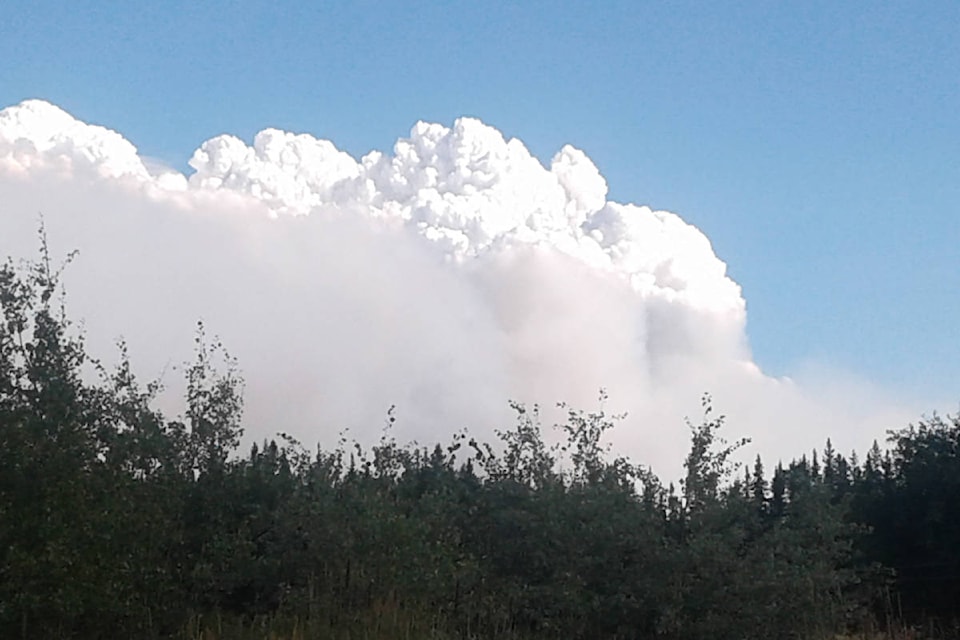Yesterday’s activity on the Elephant Hill fire saw growth outside the fire perimeter on the north west side of the fire in the Hutchinson Lake area and in the north east area on the north side of Young Lake, says Fire Information Officer Claire Allen.
“There was quite a prominent smoke column coming from the north flank of the fire yesterday. The majority of that, and definitely the very, very visible column was from inside the existing fire perimeter. There is still a lot of remaining unburned fuel and given the prevailing warm, dry conditions that we were experiencing over the past few days in that area, that did culminate in the fire doing interior fuel finding, so in that central north flank area that did pick up in behaviour yesterday, so that’s where we saw increased aggressive fire behaviour.”
The areas that saw expansion near Hutchinson Lake and Young Lake did break fire guards in the area, however, Allen says they weren’t massive and didn’t immediately threaten any structures.
“In the Hutchinson Lake area, all of those structures in the vicinity of the increased growth had structural protection units in place and those did their job yesterday to work to secure any properties in the area.”
Allen says that stronger winds and the possibility of a thunder shower are forecast for the area today and into tomorrow.
“The next 36 hours will be interesting in terms of weather,” she says.
Conditions on the fire are currently relatively benign, she says, however, that’s likely due to higher humidities and cooler temperatures overnight. The afternoon could see increased activity on the fire as the temperature heats up.
“It’s mostly a creeping ground fire in a lot of areas [with] open surface flame in the more dry and active parts in the north flank with intermittent tree candling in those more active areas in the north there,” she says.
While thunder storms could bring some welcome precipitation to some area of the fire, she says that other parts that remain dry may see stronger winds that may increase activity on the fire.
“Crews are really working to secure containment lines that could be challenged by any gusty winds we might have this afternoon as well as tomorrow.”
Crews are also assessing where to put contingency lines in place to the north east of the fire, in case the fire jumps existing guards that are being built or strengthened tight along the fire.
“Those work as a back up plan just in case our guard lines do get challenged by any unpredictable or volatile weather conditions.”
Allen says crews will be using existing road systems to build the guards as well as to get access to the area in order to work quicker and also make it easier for rehabilitation.
She says that even if they haven’t been visible, there has been a significant presence on the ground in the north part of the fire.
“We do have air tankers and bird dog flights happening on the fire right now and it’s possible that with the folks staying behind they just don’t have the vantage point that allows them to see either the access points that we are using or where the firefighters actually are. It’s a vast area of the fire,” she says, adding they are using all the resources that are available to them to try and get contaiment on the fire.
She says aircraft are used according to the objectives and conditions seen on the fire.
“For example, we when we have heavy smoke in the area that obscures the pilots’ ability to safely fly as well as for air tankers and buckets to see their targets on the ground as well as any ground crews that might be in the area,” she says.
“It also depends on where the fire is going and in terms of the terrain and fuel type that we would use… it’s a dynamic situation, it’s hard to say. There is not really a cut and paste of when we can and can’t use them, it’s always evolving and we definitely use them as we can to help our ground crews get containment.”
